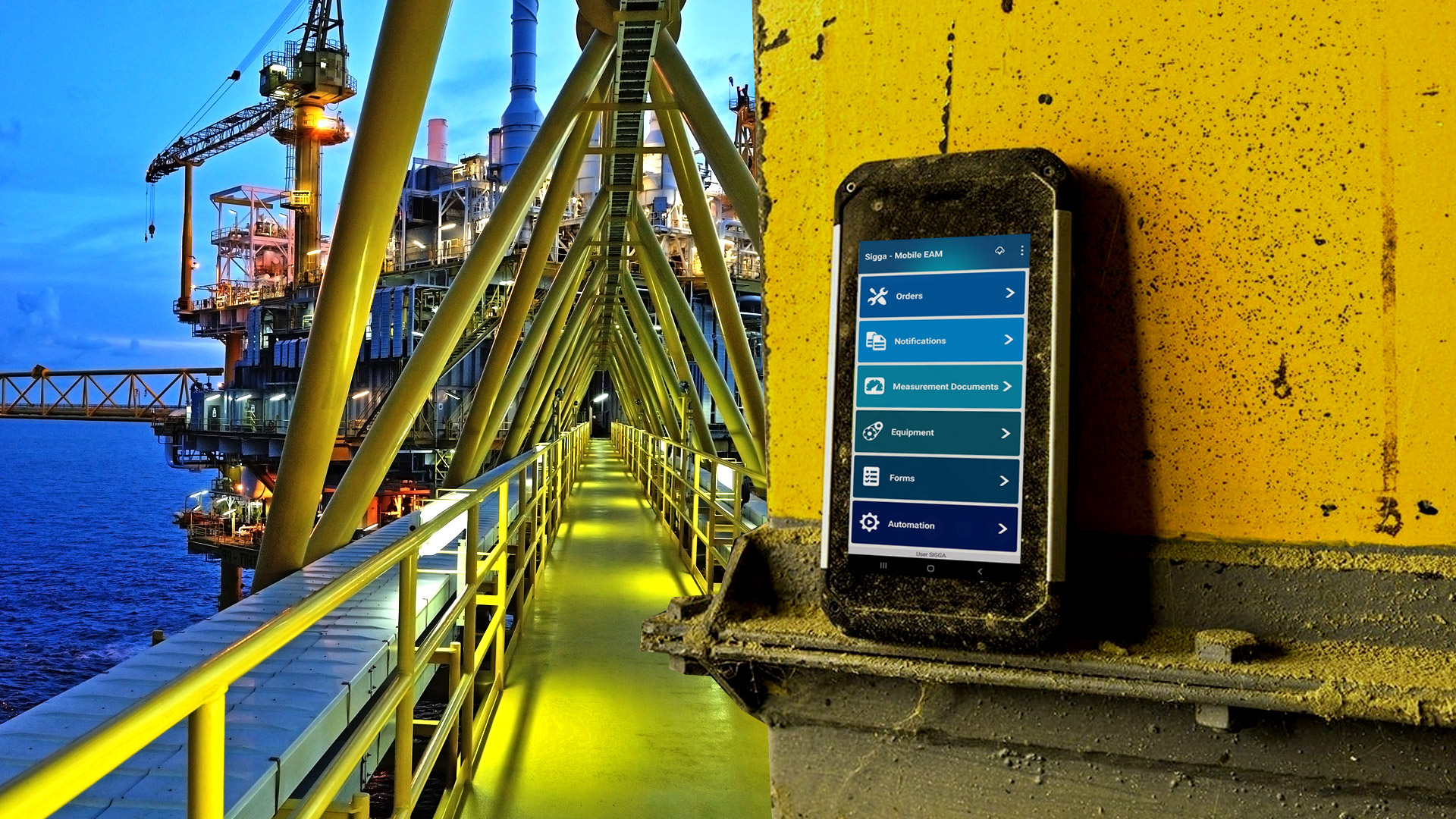The transition from SAP’s conventional ERP solution to S/4 HANA brings diverse positive changes to the table including improved performance, better security, and embraces third-party cloud-based SaaS applications. SAP fully recognizes the value of third-party solutions to deliver a superior user experience. When these solutions come on a cloud SaaS platform, the result is improved agility and tailored experiences replacing the customizations that in the past hampered the evolution of the SAP core.
This article will discuss these opportunities and more with utilizing cloud-based SaaS applications to simplify use and extend the capabilities of SAP EAM.
The New Relationship of SAP with Cloud SaaS Applications
SAP S/4 HANA leverages SAP’s in-memory computing technology, SAP HANA, to empower organizations with more powerful tools to manage data and to drive data analytics. This focussed role for SAP S4/HANA can be traced to a few crucial causation factors – the widespread implementation of digital transformation initiatives, the move to industry 4.0, and the growing need to increase agility and adapt to rapidly changing conditions. And what roles do these factors play?
Although 70% of enterprises may have adopted digitized data-capturing and aggregation processes such as an ERP like SAP, true digital transformation strategies are designed to achieve much more. The goal of the transformation process involves streamlining the ability to gain data-driven insights, automate repetitive tasks, enable front end-users with mobile devices, and to simplify decision-making. This leads to the next crucial factor in the equation.
The fourth industrial revolution is expected to leverage data-driven analytics to automate front-end operational processes and facilitate the application of organizational strategies such as predictive maintenance. Although SAP simplifies the collection of data, prior to SAP S4/HANA the ERP did not provide a user-friendly interface nor seamless support for third-party applications.
Keeping data in silos defeats the analytics capabilities of an enterprise-wide information system. So, SAP’s strategy is to provide seamless support for cloud-based third-party applications allowing your organization to implement industry 4.0 business models and robust end-to-end digital transformation strategies supported by the power of the SAP backend.
Lastly, due to the growth in cloud SaaS applications, SAP saw the opportunity to solve issues they had with customizations. That is, they could push any customizations customers desired to the application layer of the technology stack freeing the core SAP system to operate faster, manage more data, and provide real-time, cross-business insights.
The Evolution of SAP and Third-Party solutions
SAP’s older ERPs such as ECC provided multiple challenging scenarios for organizations using these solutions to capture data and manage operational workflows. Conducting ECC version upgrades, software integrations, and customizing the ERP required extensive technical know-how. Every upgrade and customization project needed extensive recalibration to ensure legacy codes and existing functionalities functioned as expected within the system. Hence, customization projects required professionals with extensive expertise in the interdependencies within the ERP.
As a result, utilizing third-party applications within traditional SAP ecosystems was a difficult proposition. The integration process required an extensive impact assessment before deploying. The assessment process generally involved evaluating the possibility of interface compatibility issues and data fidelity making the integration of third-party applications a complex, time-consuming, and expensive activity.
According to SAP, “SAP recognizes the need to complement its applications with best-in-class cloud SaaS solutions for the most critical lines of business”. Hence, with S/4 HANA, SAP provided opportunities for third-party cloud SaaS providers to develop intelligent and intuitive applications to deliver real-time connected end-user experiences including the use of mobile devices. As a consequence, SAP vastly improved the integration process.
With S/4 HANA, SAP turned their focus to their core business functions while embracing the agility Cloud SaaS solutions could provide. This arrangement ensures S/4 HANA continues to serve as a powerful in-memory computing resource for large data sets leaving Cloud SaaS applications to drive its front-end user experiences for the management of diverse workflows.
Agility Through Cloud SaaS Applications
In addition to recognizing the value of enabling a wide network of cloud SaaS solutions for a breadth of user experiences, SAP is taking advantage of the agility of cloud SaaS solutions. That is, the ability for these solutions to handle the customizations that were once done in the past within the core ERP system itself.
“A modern approach to customization is one that offers a high degree of flexibility while maintaining the integrity of the core. Developing customizations on a development platform that is tightly linked to the core application capabilities yields the same benefits as customizations yet does not disturb the integrity of the core so necessary to ensure continuous innovations get delivered at the pace of business. All new modern SaaS based applications follow this approach. This extensions and platform-based approach to customization enables companies to provide an “agile edge” without disrupting the core. Companies can continue to add new capabilities that reflect their uniqueness in the marketplace without having to customize their core ERP code and lower ensuing risks and costs. A win-win in all regards!” SAP Blog
For companies who have migrated to SAP S/4HANA, you probably already have realized the limitations of the SAP system to encompass your customizations from the prior version. As such, you are likely dealing with the vanilla workflows. If you are in this situation, or migrating to SAP S4/Hana, it is important to consider third-party cloud SaaS applications now that can address your unique needs.
Leveraging Cloud SaaS Solutions to Optimize SAP EAM
Enterprises utilizing SAP S/4 HANA to optimize business processes and cross ERP data insights can take advantage of Cloud SaaS EAM solutions to collect the data to fuel the built-in intelligent technologies such as AI, machine learning, and advanced analytics.
Although SAP now offers an S/4 HANA Manufacturing suite, its solution focuses on capturing IoT data and facilitating collaboration leaving many opportunities for further digitization of workflows and providing better front end-user experiences within operations. For example, a Cloud SaaS application built for user experiences to conduct asset maintenance or developing optimized schedules can utilize and update the SAP core database while delivering superior end-user experiences with real-time access to the SAP data.
The real-time visibility Cloud SaaS solutions provide means workers are more efficient with their available work hours. Workers have crucial information at their fingertips and decision-makers can track operational KPIs in real-time. Other important benefits of utilizing third-party cloud SaaS applications include:
- Leveraging the expertise of SaaS solution companies providing solutions for your functional area
- Taking advantage of the specialization required for delivering intuitive mobile user experiences
- Leveraging the fact that Cloud SaaS vendors handle security upgrades and continuous app improvements
Choosing a Cloud SaaS Application for EAM
Third-party solutions empower enterprises to take advantage of the opportunities SAP S/4 HANA brings to the table and this starts with choosing the right vendors. Here’s a few questions to ask when choosing a vendor:
- Does the solutions provider have industry-specific expertise that relates to your use cases?
- What is the vendor’s application track record within your industry?
- Are the vendor’s solutions SAP-certified for SAP S/4HANA?
- Are the mobile solutions intuitive native apps and provide full online and offline use?
- How easy is it to customize the application to your work processes?
Sigga Cloud SaaS Solutions for SAP
At Sigga, we have been working with SAP for the last 20 years. We were one of the first SAP partners to have a product running on the Sybase Unwired Platform, the first partner to perform an SAP Customer Qualification Process, and we become a benchmark SAP ICC partner when it comes to integrating solutions to SAP.
Even today, we continue to be tuned on SAP’s strategies, products, and roadmap, which helps us to certify to each new platform, like SAP S4/HANA, and assist customers in taking advantage of the capabilities of each generation of SAP.
Our latest innovation for SAP is our Sigga EAM Empower mobile app, which is a cloud-based SaaS application. The solution comes on a no-code platform to simplify the process of modifying the app to your unique maintenance requirements without the need for customizations. No need for high-cost professional developers to create your workflows. In addition, we have a no-code SAP integration solution furthering the time and cost benefits. With the technical barriers resolved, you can quickly put our mobile solution in the hands of your technicians and see the power of real-time access and improved data quality in SAP.
See the agility of a cloud SaaS mobile EAM!









